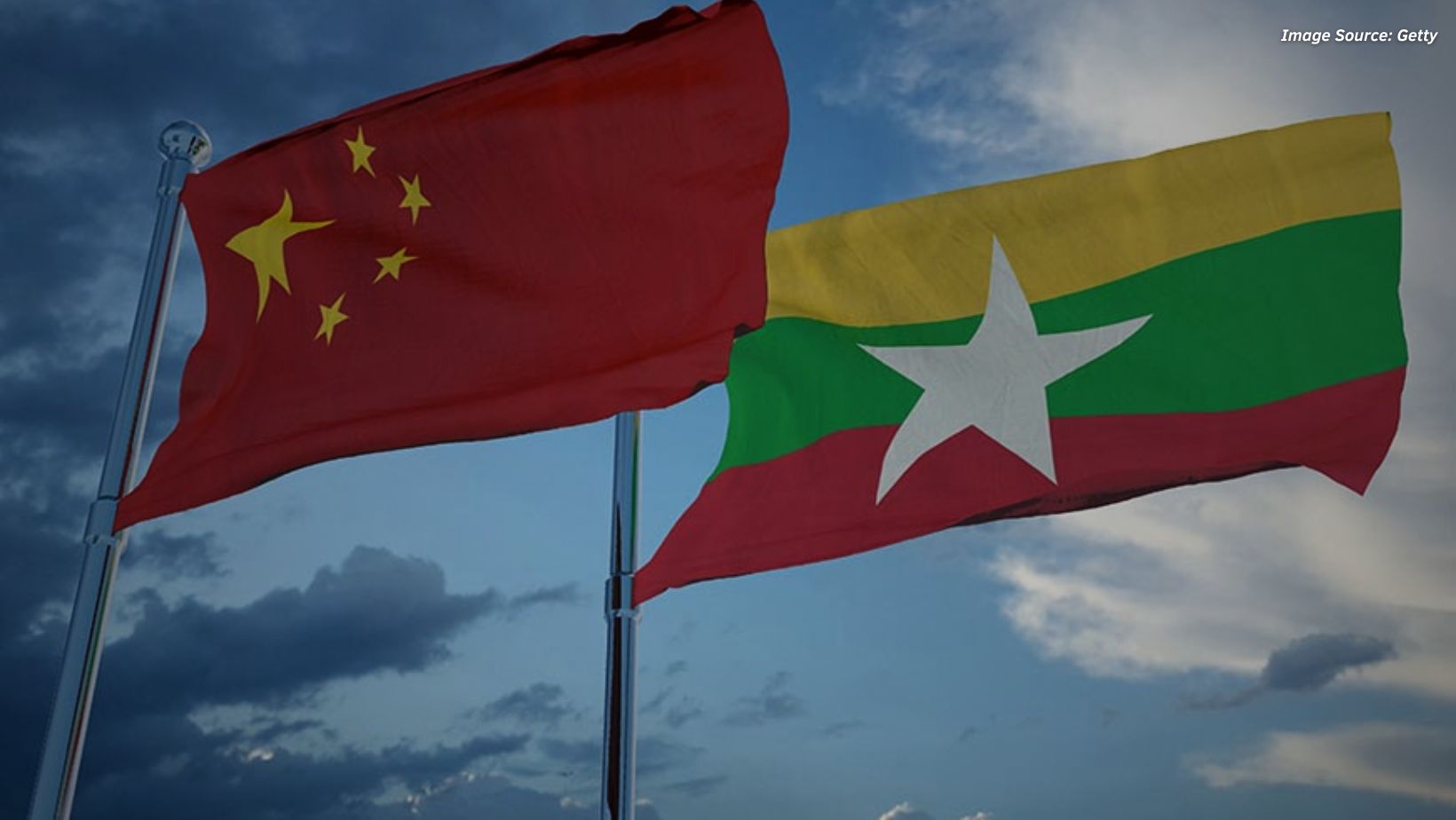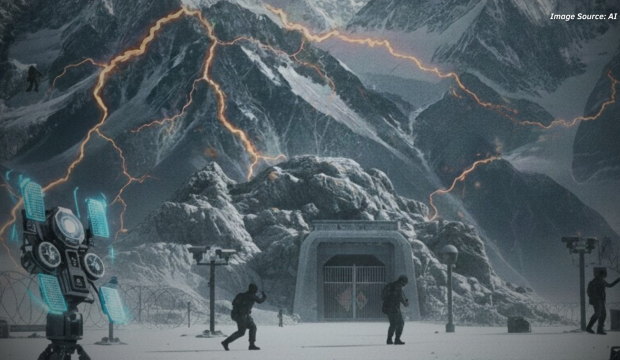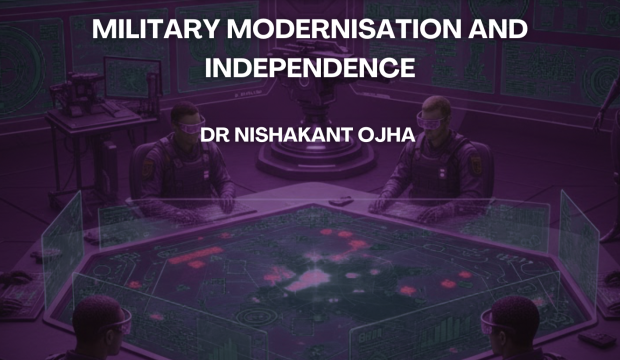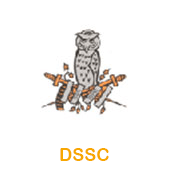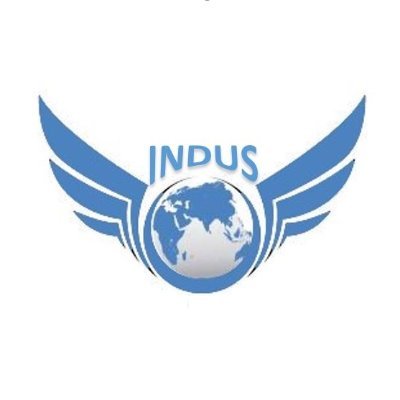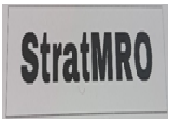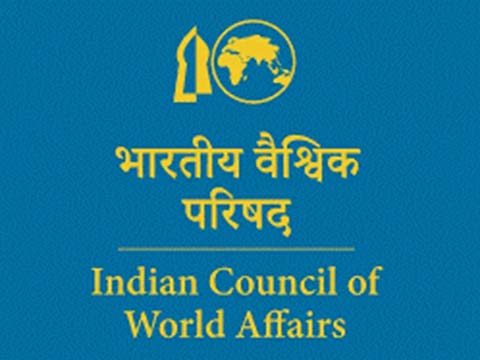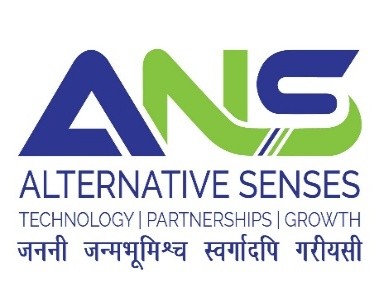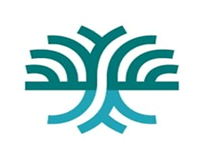Introduction
The region of the Bay of Bengal (BoB) has transitioned from being the silent periphery of the Indian Ocean region (IOR) to now rapidly growing as an area of battleground amid the increasing maritime conflict between two Asian powers, India and China.1 Myanmar is also anchored in the centre of this geopolitical move, where China is continuously developing its presence through dual-use infrastructure and strategic port engagements.2Projects including Kyaukphyu Deep Sea Port, under China’s BRI; particularly the China-Myanmar Economic Corridor (CMEC)3, and possible advancements in building a radar station and runway on the Coco Islands are redefining the regional maritime balance of power.4
For India, these geostrategic actions explicitly impact its national security and interests. India and Myanmar share a 1,643 km (1,021 miles) land border (being the only ASEAN state to share a land border) and a maritime border in the Bay of Bengal. Additionally, India’s northeastern states are linked to Southeast Asia through Myanmar, which makes Myanmar a significant country and a gateway in India’s Act East Policy with Southeast Asia.5 With the Andaman and Nicobar Islands less than sixty kilometres away from Coco Island of Myanmar, China’s increasing footprint in the region poses a risk to India’s maritime security on the eastern front and its larger Indo-Pacific framework.6 The concern for India is double-layered: Firstly, how to respond to China’s growing footprint in Myanmar and the BoB overall, and secondly, how to renew engagement with Myanmar without driving it further into China’s sphere of influence.
Myanmar’s strategic considerations and interests further complicate this maritime competition. Diplomatically alienated since the 2021 military coup, the country has inclined towards China for its economic interests, China’s eagerness to enter into dialogue with the Junta and its significant participation in supplying arms for the military regime, continues to be apprehensive about Myanmar turning into a dependent state.7 In this geostrategic competition, Myanmar is not a marginal participant but a geostrategic location where Beijing’s goals and India’s concerns collide and where the trajectory of the BoB’s power struggles might be shaped.
Beijing’s Strategic Depth in Myanmar
Beijing’s rising prominence in Myanmar is more than just geo-economic engagement; it is a deliberate effort to broaden its sphere of influence and presence in the IOR. By investing and developing Myanmar’s maritime infrastructure, China is looking for an alternate maritime trade corridor around the Indian Ocean that will reduce its dependence on the critical narrow chokepoint of the Malacca Strait.8 This tactical move is driven by its long-term economic strategy objectives, which offer energy and defence security objectives.9
A significant pillar of this vision is the ongoing controversial maritime developments in the Rakhine state’s Kyaukphyu, a western rural seaside village in Myanmar.10The Kyaukphyu deep-sea port project (calculated to cost around US$7.3 billion) is directly linked to China’s Yunnan province through Sino-Myanmar pipelines, and proposals are underway to build roads and railways11 which will link China directly to the Indian Ocean via Myanmar. These gas pipelines (functioning since 2017), which are claimed to have a capacity to transport twenty-two million barrels, currently carry an estimated five per cent of China’s crude oil imports.12
Beijing’s strategic narratives articulate Kyaukphyu deep sea port as a “major part under the Belt and Road strategy as well as the China-Myanmar Economic Corridor” and “of great significance to practical cooperation”,13 indicating its significance as a core economic corridor. Moreover, the port’s infrastructural framework, has the capacity to support large support vessels (cargo ships) to a maximum of 15,000 DWT with a 9-meter draft.14 Its shareholding model developed by CITIC Myanmar Port Investment Limited with 70% of stakes is owned by Chinese consortium stating it as, ‘“Kyaukphyu will be the Pearl City of the Bay of Bengal” 15and remaining 30% is owned by Myanmar government and Kyaukphyu SEZ Management Committee,16 highly indicates underlying strategic motives of China. With fifty years of lease of Kyaukphyu deep sea port 17 and considering Beijing’s past patterns of strategies in Sri Lanka’s Hambantota port, where debt-trap diplomacy resulted in ninety-nine years of lease 18 raises apprehensions over the future possibilities of China, using the port for dual economic-military purposes.
Furthermore, the Coco Islands archipelago (part of the Yangon region), located in the northeastern part of the Bay of Bengal, is unfolding in a more understated but equally concerning way. With approximately 11km (6.5 miles) long and 2km (1.2miles) wide, this archipelago, is located just 55 km (36 miles) away from the Andaman and Nicobar Islands which serves as operations hub for Indian Navy and air force bases, is alleged to be under potential use by China.19Recently, photos released by Maxar Technologies20, with expertise in satellite images, showed images of construction-related operations on the Great Coco archipelago, a visibly clear 2,300-metre runway with two aircraft hangers and a radar station, indicating espionage or intelligence sharing activities by Chinese officials with the support of Tatmadaw (Myanmar’s armed forces).21 Even though Myanmar officials from time to time have dismissed all allegations regarding any Chinese ongoing military activities and stating it as, ‘absurd’ after Indian state officials across multiple meetings raised concerns and shared satellite images reporting Chinese presence, assisting in the development of Surveillance outpost on the Coco Island, concerning it could be pose a significant security challenge to India particularly India’s eastern coastal part surrounding Bay of Bengal.22
It is necessary to understand growing Chinese maritime infrastructural developments following the 2021 coup in Myanmar. The State Administration Council (SAC), the current military junta government, is inclined towards China for various reasons.23Firstly, China is a key provider of military equipment to the current regime, supplying approximately $267 million of weapons.24 The current government has also purchased Chinese brand drones and surveillance-based equipment to regulate and suppress civilians and opposition, maintaining societal control.25Secondly, Myanmar shares northern and northeastern parts of its border with China, where China has taken the initiative for ceasefire in border areas, between armed resistance groups like Myanmar National Democratic Alliance Army (MNDAA) and Junta, stabilising the border regions to some extent.26 Therefore, the military regime depends on Beijing’s influence over ethnic organizations to reduce hostilities and contain cross-border unrest and threats. It should be noted that the Chinese government and companies have invested in ports, gas and oil resources, part of BRI projects which depends on the Junta to protect its security interests and operational stability.27 These developments allow China to determine and influence Myanmar’s maritime geography.
India’s Strategic Dilemma: Stand Firm or Slip Away?
New Delhi has been closely monitoring Beijing’s expanding naval footprints in Myanmar through naval projects such as ports, and alleged intelligence stations, as this geostrategic encirclement intensifies around India’s eastern strategic frontier.28India, which once maintained a significant hold over the BoB region, is encountering a silent but substantial change in the maritime sphere. In the middle of India’s apprehension is the Andaman and Nicobar Command, the nation’s only integrated tri-services command of the Indian Armed Forces (2001), operating at Port Blair, which serves as a crucial forward base protecting the eastern coasts of India from maritime threats.29 Beijing’s expanding presence in the BoB region through maritime infrastructure development and littorals state diplomacy now poses a risk to New Delhi’s national maritime security.30These emerging Chinese maritime footholds in the BoB region compromise India’s early warning systems, challenge anti-submarine warfare (ASW), and limit its capacity to manage vital shipping routes in case of emergency.
Further, the close geostrategic location of the Coco archipelago to the Andaman and Nicobar Islands makes India’s maritime operations more visible and possibly open to threat.31Particularly, A&N islands oversee vital strategic sea routes where approximately 60,000 commercial vessels pass through it annually, primarily through chokepoints like Six Degree Channel, which works as a significant sea lane of communication (SLOC) which connects Indian Ocean with the Strait of Malacca and Pacific Ocean.32This impacts not just the strategic equation about Beijing, but also affects New Delhi’s capability to instil confidence in smaller South and Southeast Asian countries like Sri Lanka, Myanmar and Thailand in its leadership in establishing maritime security in the BoB region.
Since, the 2021 military coup in Myanmar, India has adopted a calibrated approach, engaging pragmatically with the Junta to safeguard its long term geo-strategic interests, while consistently upholding its commitments to democratic values and advocating for a stable inclusive political transition.33 This effect has been seen on ongoing infrastructural projects like Kaladan Multimodal Transit Project (KMTTP). This project, which focuses on the development of Sittwe deepwater port, is located at Rakhine state of Myanmar highlights India’s aim to strengthen regional connectivity and offers an alternative pathway to China-supported Kyaukphyu deep sea port, which is just 85km away from the Sittwe Port.34While the port has been partially operationalised since 2023, continuous civil war hostilities and security challenges, especially the Arakan army’s (AA) growing influence in the Rakhine State have resulted in numerous delays in finishing the project.35 Despite its full capabilities, the port has been affected by underdeveloped logistical coordination, deficit bilateral trade relations through maritime trade routes and difficulties in engaging with ethnic groups like AA has affected in delays of the development of the port.36
Although Sittwe Port has some significant infrastructural gaps and political gaps, it should also be noted that India, despite complex relations with the junta regime, it has mostly maintained formal engagements. It has continued to engage with existing naval exercises like 6th IMNEX (2024) and MILAN 2024 which focuses on maritime security and cooperation,37also, both the countries have signed maritime MOUs from time to time, which have resulted in significant diplomatic initiatives like India presenting INS Sindhuvir to the Myanmar Navy in 2020 (renamed UMS Minye Theinkhathu), which is generally considered a successful bilateral defence diplomacy, to counterbalance Beijing’s footprint in the region.38 Although both the nations recognised the significance of MoU on Maritime Security Cooperation (2019) which mostly likely established the foundation for potential collaborations comprising exchange of white shipping data and initial sessions of the Joint Working Group (JWG) on maritime cooperation39, there has been limited progress reports of these initiatives signifying a gap in long-term technical joint efforts and maritime domain awareness between both the nations, questioning pragmatic naval collaboration and capacity building in the BoB region.
Additionally, New Delhi has tried to incorporate Myanmar into maritime regional architecture, such as BIMSTEC and IORA (Indian Ocean Rim Association), where it exercises a significant leadership role. Although, Myanmar’s admission to IORA’s membership has been opposed as current junta military regime which is facing international sanctions over human rights issues; comprising systematic repression of Rohingya population, have been subjected to push back from specific countries (Bangladesh, South Africa, Somalia) due to its non-cooperation and lack of sustained dedication to principles of democracy and human rights.40
Myanmar as a Member State of BIMSTEC
BIMSTEC, where Myanmar is an active member, the organisation has faced criticisms all over the world for not taking any united actions against junta government which expressed concerns demanding BIMSTEC states, to take initiatives for dialogue among all the stakeholders of the State.41 New Delhi cannot set aside Naypyidaw from regional platforms, where being isolated just pushes Myanmar further into China’s sphere of influence. Rather, New Delhi, must consider innovative diplomatic channels to sustain engagement with Naypyidaw, across areas of apolitical domains like crisis response, shared marine ecosystem conservation and integration by interconnectivity, where collaboration doesn’t indicate political backing but reinforces its strategic engagement.
Unless India transcends occasional participation and invests both economically and diplomatically more within a formalized and coordinated maritime framework with Myanmar, through naval infrastructural projects, blue economy initiatives, dialogues and including Myanmar often in its Indo-Pacific doctrine, New Delhi is reducing its influence to Beijing in a region and a country that is significant to its eastern seaboard. Also at the same time, India must now broaden its engagements in Myanmar by acknowledging the multi-stake holders in the region and pursue a more context-sensitive approach to protect its infrastructural and connectivity projects in the region.
Myanmar’s Role in the Maritime Praxis: Quiet Hedging, Strategic Calculation
Myanmar is not merely a marginal state in the BoB’s developing maritime competition. Its acceptance of Beijing’s and New Delhi’s investments in building projects is grounded in a realist approach rather than just being an ideological consideration.42 Sidelined by international sanctions, particularly from Western nations, post-2021 military coup, Myanmar has inclined towards China and India, driven by calculated geostrategic interests, each providing alternative frameworks of involvement approaches.43 Beijing has protected the current military regime from United Nations political condemnation and financial sanctions, advanced initiatives in infrastructural projects under CMEC, and investments in natural resources, mining, and manufacturing.44 Also simultaneously, New Delhi has avoided publicly denouncing the military regime, has continued diplomatic engagements by engaging with state officials at high-level conferences and maintained strategic operations by developing projects like Sittwe port, despite unrest and violence in Rakhine and Chin provinces.45
Instead of completely aligning and favouring one side, Myanmar is balancing its geostrategic interests. In the past, it consistently resisted the permanent stationing of foreign forces and persistently rejected any such agreements due to long-term concerns about sovereignty dilution. On the ground level, local populations of the Rakhine states, along with the Arakan Army, an ethnic group, have voiced worries of external involvement of both Chinese and Indian officials in the port projects without any local consultation,46 which might cause environmental threats and local displacements.47 Therefore, both at the top and bottom level, Myanmar have tried to protect its strategic autonomy, meanwhile gaining financial profits from both Beijing and New Delhi, upholding itself as a sovereign nation-state amid growing militarily contested waters.
Conclusion
The BoB is being redefined by sea patrol operations and strategic infrastructure connectivity routes, tracking and detection systems, and normative-diplomatic networks. The New Delhi-Beijing contestation developing in Myanmar transcends beyond a bilateral power struggle; it reflects a deeper and broader battle of influence throughout the wider Indo-Pacific. If China keeps reinforcing its geostrategic depth in Myanmar through commercial ports with military possibilities and an unopposed economic presence, it could shift the regional equilibrium, transforming the Bob region into a strategic lake of influence, encircling India’s eastern maritime frontier and compromising its capability to demonstrate regional leverage from the Andaman & Nicobar Command.
However, this development remains uncertain. India still has considerable amicable relations, civilizational linkages and regional leverage, but only if it develops beyond occasional engagements into a well-structured maritime strategy. This requires integrating defence diplomacy backed by connectivity projects, integrating Myanmar into regional organizations like IORA and actively working with BIMSTEC, and providing reliable alternatives to Chinese-led projects. BoB’s future depends not just on how New Delhi and Beijing act but also on whether regional states transition from a zero-sum game and can work together cooperatively to establish an equitable maritime framework where national autonomy is upheld and maintain strategic independence, or risk it unravelling into rival power blocs. In the middle of this dilemma, lies Myanmar, long treated as a marginal nation, now silently navigates its geostrategic positioning in Asia. The assistance and benefits it receives and the blocs it selects may characterize the new Bay of Bengal security dilemma era. Additionally, the paths chosen now, in maritime ports, navy patrols, and economic benefits, will shape the Bay of Bengal’s regional balance for years to come.
DISCLAIMER
The paper is author’s individual scholastic articulation and does not necessarily reflect the views of CENJOWS. The author certifies that the article is original in content, unpublished and it has not been submitted for publication/ web upload elsewhere and that the facts and figures quoted are duly referenced, as needed and are believed to be correct.
References
1.Islam, Md Safiqul. “The Strategies of China and India in the Bay of Bengal Region: Revisiting Strategic Competition, ‖.” Yonsei Journal of International Studies 10, no. 1 (2018): 28–53.
2.Hardy, Dennis. “Repositioning the Bay of Bengal: Implications of Regional Change.” Journal of the Indian Ocean Region 15, no. 3 (September 2, 2019): 265–80. doi-https://doi.org/10.1080/19480881.2019.1640576
3.Sin, Kyi. “Securing the China-Myanmar Economic Corridor: Navigating Conflicts and Public Scepticism.” FULCRUM. October 24, 2024. URL- https://fulcrum.sg/securing-the-china-myanmar-economic-corridor-navigating-conflicts-and-public-scepticism/
4.MENDELSON, ALLEGRA. “Chinese Base or Wild Rumour? The Coco Islands Mystery.” Frontier Myanmar, June 5, 2023. URL- https://www.frontiermyanmar.net/en/chinese-base-or-wild-rumour-the-coco-islands-mystery/
5.Majumdar, Munmun. “India–Myanmar Border Fencing and India’s Act East Policy.” India Quarterly a Journal of International Affairs 76, no. 1 (March 1, 2020): 58–72. doi- https://doi.org/10.1177/0974928419901
6.MENDELSON, ALLEGRA. “Chinese Base or Wild Rumour? The Coco Islands Mystery.” Frontier Myanmar, June 5, 2023. URL- https://www.frontiermyanmar.net/en/chinese-base-or-wild-rumour-the-coco-islands-mystery/
7.Tang, Clara Mang Sui. “Evaluating Interdependence: The Impacts of the February 2021 Coup on Myanmar–China Relations.” Journal of Current Southeast Asian Affairs, March 20, 2025. doi-https://doi.org/10.1177/18681034251328012
8.Cameron, Shaun. “Why Is Myanmar’s New Deep- Sea Port Such Hot Property?” Lowy Institute, November 22, 2023. URL- https://www.lowyinstitute.org/the-interpreter/why-myanmar-s-new-deep-sea-port-such-hot-property
9.bid
10.Ibid
11.Ta-Wei Chu, Saw Jonathan, and Kyaw Lynn, “Biopolitics in Rebel-Controlled Myanmar: Exploring Why the United League of Arakan Supports the Kyaukphyu Special Economic Zone,” Journal of Current Southeast Asian Affairs 43, no. 3 (May 20, 2024): 472–99. doi- https://doi.org/10.1177/18681034241256369
12.Alatorre, Carlos. “China’s Investments in Myanmar: Analyzing the Status of Projects.” Tearline, May 8, 2024. URL- https://www.tearline.mil/public_page/china-investments-in-myanmar
13.Portnews. “China and Myanma Sign a Supplementary Agreement for the Kyaukphyu Deep Water Port,” December 29, 2023. URL- https://en.portnews.ru/news/358102/
14.Myanma Port Authority. “Ports in Myanmar,” n.d. URL- https://www.mpa.gov.mm/ports/kyaukphyu-deep-sea-port/
15.Alatorre, Carlos. “China’s Investments in Myanmar: Analyzing the Status of Projects.” Tearline, May 8, 2024. URL- https://www.tearline.mil/public_page/china-investments-in-myanmar
16.Global Times. “China, Myanmar Sign Kyaukphyu SEZ Deep-sea Port Deal After Years of Negotiations.” Belt and Road Portal, November 9, 2018. URL- https://eng.yidaiyilu.gov.cn/p/71209.html
17.Alatorre, Carlos. “China’s Investments in Myanmar: Analyzing the Status of Projects.” Tearline, May 8, 2024. URL- https://www.tearline.mil/public_page/china-investments-in-myanmar
18.Sanyal, Ankita. “China’s Debt-Trap Diplomacy in South Asia.” International Centre for Peace Studies, March 15, 2023. URL- https://www.icpsnet.org/comments/China-Debt-Trap-Diplomacy-in-South-Asia
19.Ratcliffe, Rebecca. “Military Construction on Myanmar’s Great Coco Island Prompts Fears of Chinese Involvement.” The Guardian, May 1, 2023. URL- https://www.theguardian.com/world/2023/may/01/military-construction-on-myanmars-great-coco-island-prompts-fears-of-chinese-involvement
20.Ibid
21.Bloomberg. “India Confronted Myanmar About Chinese Spy Post on Remote Island.” THE TIMES OF INDIA. April 7, 2023. URL- https://timesofindia.indiatimes.com/india/india-confronted-myanmar-about-chinese-spy-post-on-remote-island/articleshow/99320371.cm
22. Ibid
23.Abuza, Zachary, and Nyein Nyein Thant Aung. “Too Little, Too Late: China Steps up Military Aid to Myanmar’s Junta.” Stimson Center. March 4, 2025. URL- https://www.stimson.org/2025/too-little-too-late-china-steps-up-military-aid-to-myanmars-junta/
24.Ibid
25.Ibid
26.Ibid
27.Gunjan Singh. “How China and India View Growing Unrest in Myanmar.” Deccan Herald, September 3, 2024. URL- https://www.deccanherald.com/opinion/how-china-and-india-view-growing-unrest-in-myanmar-3174629
28.Kumari, Reeta. “China’s String of Pearls Policy: Implications for India.” Swadeshi Shodh Sansthan, n.d. URL- https://swadeshishodh.org/chinas-string-of-pearls-policy-implications-for-india/
29.P, Muraliprasath. “Role of Andaman and Nicobar Islands in the Indo-Pacific: India’s Eastern Anchor.” Electronic Journal of Social and Strategic Studies 2, no. II (April 1, 2021): 78–86. Doi-https://doi.org/10.47362/EJSSS.2021.2206
30.Baruah, Darshana M. “Maritime Security in the Bay of Bengal.” Carnegie Endowment for International Peace, March 1, 2018. URL- https://carnegieendowment.org/posts/2018/03/maritime-security-in-the-bay-of-bengal?lang=en
31.MENDELSON, ALLEGRA. “Chinese Base or Wild Rumour? The Coco Islands Mystery.” Frontier Myanmar, June 5, 2023. URL- https://www.frontiermyanmar.net/en/chinese-base-or-wild-rumour-the-coco-islands-mystery/
32.Bhatnagar, Neerav. “The Strategic Importance of the Andamans: Are We Over-stretching Ourselves?” Times of India, March 22, 2023. URL- https://timesofindia.indiatimes.com/readersblog/indiaasiseeit/the-strategic-importance-of-the-andamans-are-we-over-stretching-ourselves-51780/
33.Krishnan, Murali. “What Is India’s Relationship to Myanmar’s Military Junta?” DW. February 2, 2022. URL- https://www.dw.com/en/india-walks-diplomatic-tightrope-on-myanmars-military-junta/a-62685316
34.Banerjee, Sreeparna, and Debashis Chakraborty. “Facilitating India-Myanmar Trade Through Sittwe Port: Opportunities and Challenges.” Observer Research Foundation, February 5, 2025.
35.Ibid
36.Ibid
37.Local. “Naval Visit: Myanmar Joins MILAN 2024 and 6th IMNEX in India.” Myanmar ITV, March 7, 2024. URL- https://www.myanmaritv.com/news/naval-visit-myanmar-joins-milan-2024-and-6th-imnex-india
38.Miran, Minhaj Uddin. “Can India-Myanmar Submarine Diplomacy with Counter Chinese Influence in the Region?” The Business Standard. October 30, 2020.
39.Embassy of India, Yangon, Myanmar. “Myanmar-India Joint Statement Issued on the Occasion of the State Visit of His Excellency U Win Myint, President of the Republic of the Union of Myanmar to the Republic of India,” February 22, 2020
40.Mitra, Devirupa. “Backed by India, Maldives Becomes IORA Member; Myanmar’s Entry Blocked at Last Hurdle – the Wire.” The Wire, November 3, 2018.
41.ASEAN PARLIAMENTARIANS FOR HUMAN RIGHTS. “BIMSTEC Must Not Welcome Myanmar Junta: APHR Urges Thailand to Take a Stand – APHR,” April 2, 2025. URL- https://aseanmp.org/publications/post/bimstec-must-not-welcome-myanmar-junta-aphr-urges-thailand-to-take-a-stand/
42.Simon, Allen David. “Courting Myanmar: Myanmar’s Geostrategic Position in the Sino-Indian Rivalry.” Modern Diplomacy, December 7, 2024. URL- https://moderndiplomacy.eu/2024/12/07/courting-myanmar-myanmars-geostrategic-position-in-the-sino-indian-rivalry/
43.Ibid
44.Ibid
45.Ramachandran, Sudha. “Angshuman Choudhury on India’s Robust Engagement of Myanmar’s Junta.” The Diplomat. March 20, 2023. URL- https://thediplomat.com/2023/03/angshuman-choudhury-on-indias-robust-engagement-of-myanmars-junta/
46.Mizzima. “Rakhine Group Calls for Suspension of Kyaukphyu SEZ Project.” Mizzima. December 10, 2015. URL- https://www.mizzima.com/news-domestic/rakhine-group-calls-suspension-kyaukphyu-sez-project
47.Gerin, Roseanne. “Activists Stage Protest to Demand Right to Control Resources in Myanmar’s Rakhine.” Radio Free Asia. November 27, 2018. URL- https://www.rfa.org/english/news/myanmar/activists-stage-protest-to-demand-right-11272018165100.html

Ms Bidisha Deka
is a Research Intern at CENJOWS

